Flipkart is one of the largest ecommerce platforms in India, with lakhs of buyers and thousands of sellers. It has crores of products to choose from which makes the competition fierce.
If you are a new brand or an already existing player, it is very crucial to be present wherever the buyers are shopping on Flipkart. With such cutthroat battle among brands, running ads becomes essential. Running ads not only give you visibility but also your organic visibility improves.
Flipkart offers 3 different types of campaigns to run.
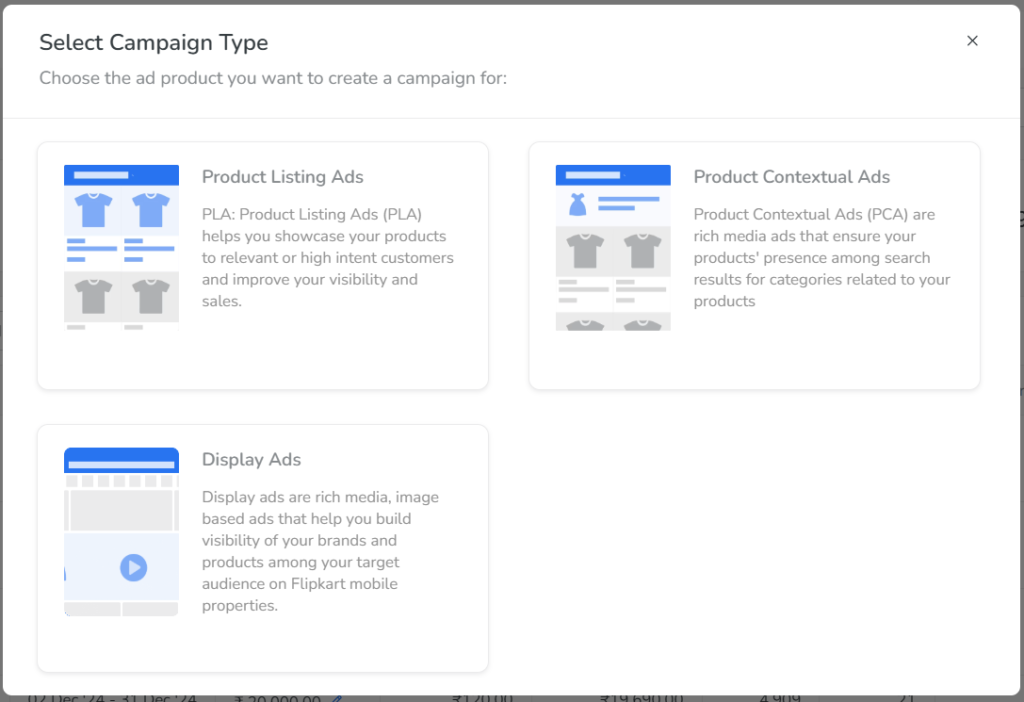
In this article, I will discuss Product Contextual Ads (PCA) in greater detail.
What is Product Contextual Ads (PCA)?
Product Contextual Ads also known as PCA are rich media ads which make sure that your products are present on search result and category pages related to your products. It enables brands to showcase their product collection to customers with relevant intent, which increases the chances of conversions and sales.
Running PCA campaigns on Flipkart allows you to connect with a vast audience of potential customers actively searching for products like yours. Moreover, Flipkart’s advertising platform provides a range of targeting options, including location, device type, and interests, enabling you to effectively reach your desired audience.
PCA is a perfect blend of visibility and performance.

How does Product Contextual Ads work?
Product Contextual Ads (PCA) on Flipkart are designed to show the most relevant ads based on what the user is actively browsing or searching. First, the system identifies the product context—understanding what the user is looking at or searching for. Then, it shortlists ads that match this context, narrowing down to those that are most relevant. An algorithm evaluates the relevance of each shortlisted ad against the product context. Finally, the highest relevance ad is displayed, ensuring the user sees promotions that are timely and meaningful.
What are the budgeting options on Product Contextual Ads?
PCAs run on 2 budgeting types.
- Total Budget- Advertisers can set a minimum of Rs. 1000 of budget. Enter the total budget for your campaign and enter the start date & end date. You can set a total budget and select “till budget ends” or enter the start date and end date. In the case of total budget campaigns, the entire amount gets locked for the campaign.
- Daily Budget – Advertisers can now set a daily budget of ₹1,000 per day at the campaign level without locking funds for the entire campaign.
Where do Product Contextual Ads appear?
PCA appears on 5 different Placements.
- Top of Search Page: This placement appears as Slot 1 on the search result page when a user searches for a specific product using search keywords. Adjust your bid accordingly to enhance the visibility of your ad at the top of search results.
- Rest of Search Page: These placements include all positions on the search result page other than Slot 1. Set your bid strategically to compete effectively and engage users as they browse search results.
- Top of Browse Page: This placement is the Slot 1 on the category browse page when a user browses or explore product through product categories. Set your bid strategically to secure optimal visibility in this prominent placement.
- Rest of Browse Page: All placement on the category browse page, except for Slot 1. Adjust your bid to capture user attention while they browse through different product categories.
- Product Page: Placed below the Add to Cart button on the product listing page of relevant products. Adjust your bid to effectively engage potential customers during critical decision-making moments.
How is the product selection done for creating PCA?
- Rule-based – Advertisers can select products for their campaigns based on specific rules; which includes price rule, discount rule and f-assured rule. For example, if you want to run ads on products that are more than Rs.1000 and has a discount of 10%.
- ADHOC – The ADHOC selection process is a manual selection process where in you can select specific product falling under same category. Note for products falling under different categories, a separate ad group must be created.
What are the targeting options for Flipkart Product Contextual Ads?
- Keyword targeting – Advertisers can choose to add keywords on which they want to show their Product Contextual Ads on. Keywords can be put under Phrase and/or Exact match only. A maximum of 100 keywords can be added.
- Negative Targeting – If advertisers choose not to show ads on certain keywords, they can exclude those keywords. Only Negative exact work.
How to Bid based on Placement?
Flipkart allows you to bid at placement level, where in you can set different bids at each placement. This helps you to prioritize and allocate the budget effectively to get the best out of your investment.
During campaign creation, under the Ad group budgeting section, you can put bids for each placement level within individual Ad Groups. By setting higher bids, you increase the chances of your ads winning the auction for that placement. On the other hand, lower bids might decrease the visibility of your ads in those placements.
Adjusting your bids is simple. Flipkart provides a winning bid range; it is advisable to make your average bid within that range.
How many types of Creatives are available under Product Contextual Ads?
Flipkart allows 4 different creative types to choose from depending on your requirements.
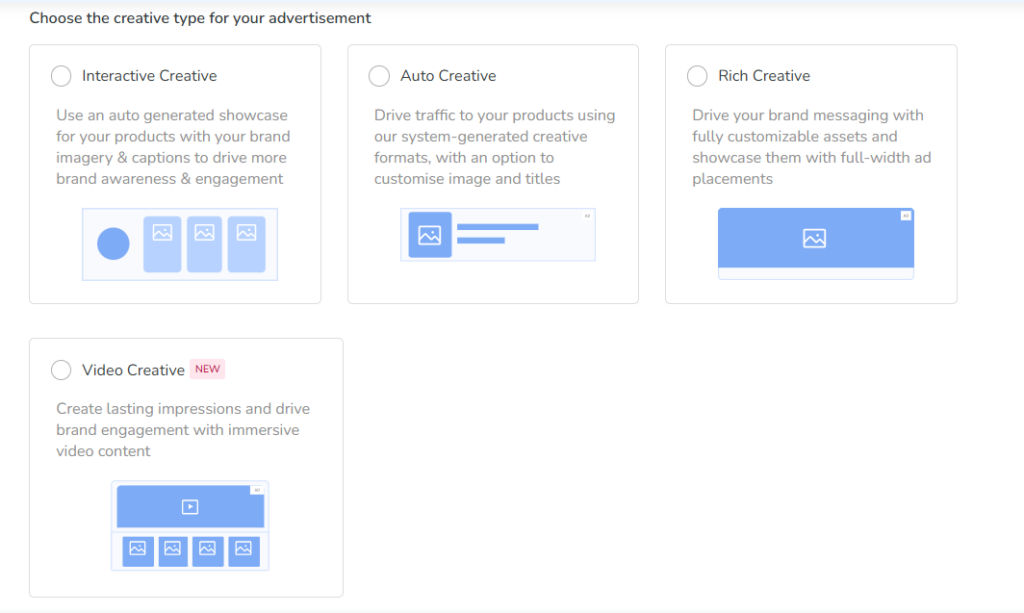
- Auto Creative – Best suited to campaigns that need to go live immediately. The simplest and easiest creative to start with. You can select a system generated creative to run your product contextual ads to bring traffic to your products. The creatives are generated from images of products selected for landing page. Alternatively, you can customize this creative by giving a maximum of 3(800 x 800 pixels) images and up to 2 titles.

- Rich Creative – Useful to drive visibility and awareness among high intent user. This is the most used type of creative in which you can upload your own creative and engage with the audience using custom call to action. Here, you can convey your brand message with full customizable assets and showcase them with full width ad placement which gives boost to consideration/CTR. You can upload up to 5(1376 x 448 pixels) images and 3 CTA.
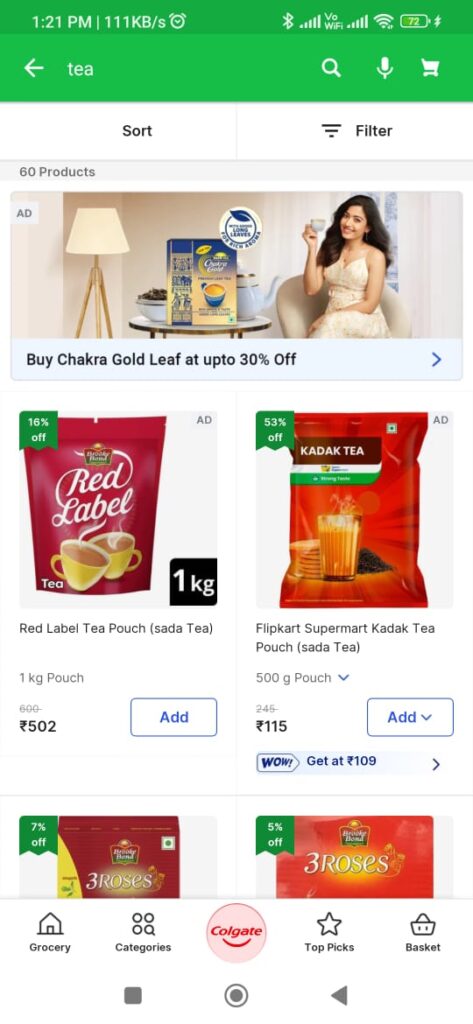
- Interactive Creative – You can use an auto generated showcase for your products with brand imagery and captions to drive brand awareness and consideration. This type of creative is in the form of interactive product slider and sandwiched between brand’s imagery. In this, you can upload a brand logo, (up to 3) Background Image, Callout (up to 2) and CTA (up to 1).
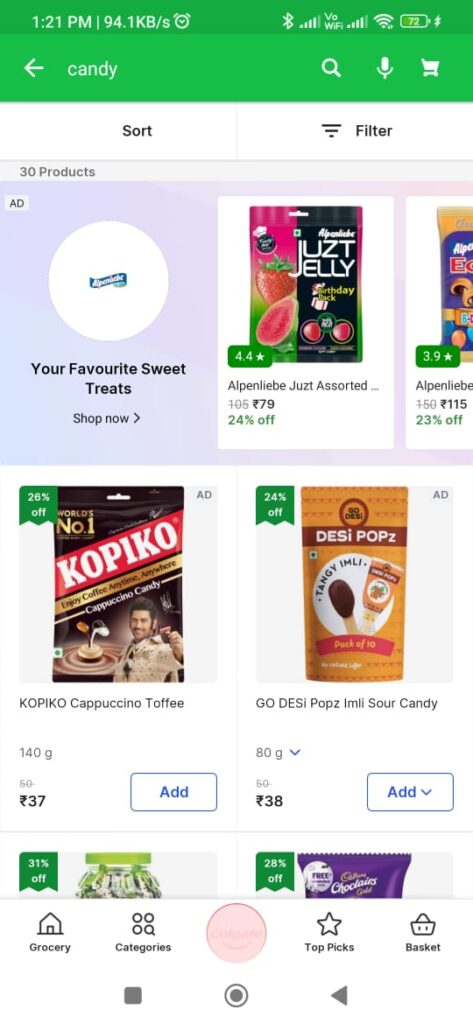
- Video Creative – This is used to create a lasting impression and drive brand awareness using video content. Using video creative you can captivate audience by conveying impressive brand stories and sell effectively. It has higher CTR which accelerate performance and make the ad stand out from crowd and capture attention. You can also highlight product USP and feature in an engaging manner. To run the Video Creative, you must select the following
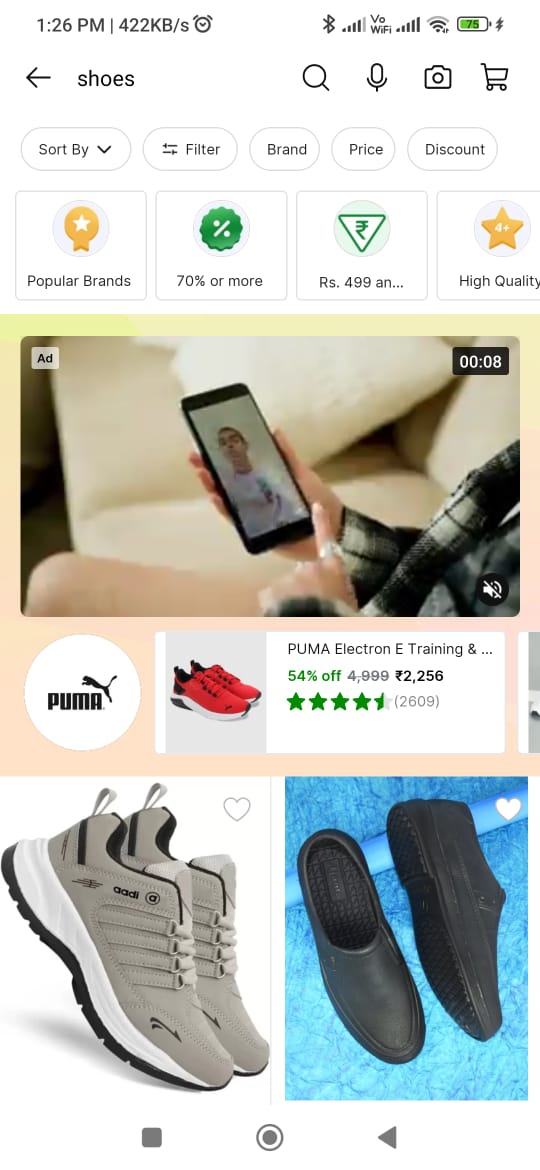
How to create PCA on Flipkart?
PCA can be run by following the simple steps.
Step 1 – Click on “Create Campaign” and Select “Product Contextual Ads”
Step 2 – Enter Campaign name, Duration (with end date or “till budget ends”), budget type (total or daily) and where do you want to show your ad (Flipkart, Grocery or Minutes) and Click on “Continue“.
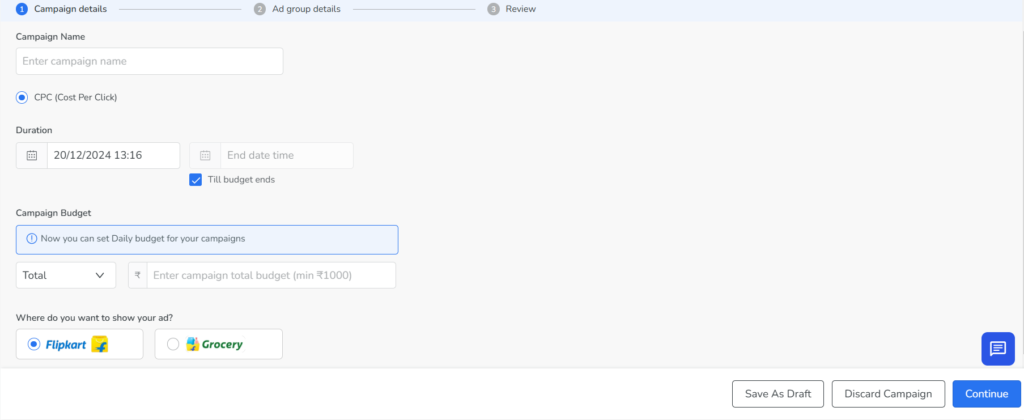
Step 3 – Click on “Create Ad group“.

Step 4 – Enter Ad Group name, Select the products (Rule based or Adhoc) and click on next.

Step 5 – Select the creative type (Auto creative, Rich creative, Interactive creative or video creative) and click on next.
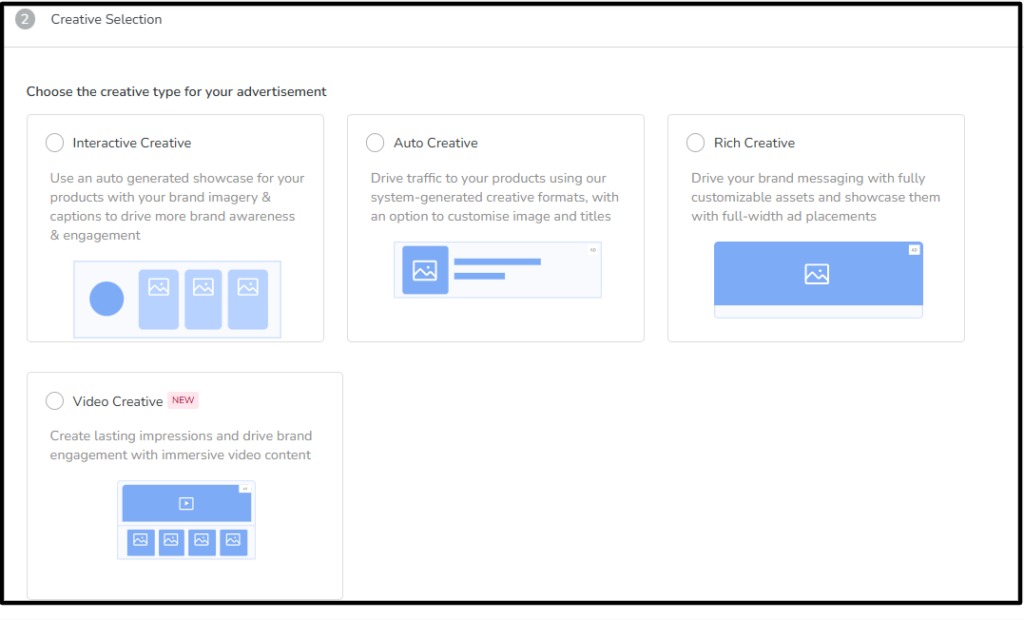
Step 6 – Enter Ad group budget limit, Duration, Budget Pacing (Fast Pace or Even Pace), bids by placement, Advance Targeting (Decide whether ads have to be shown on related stores or not, keywords targeting, location targeting) and save ad group.

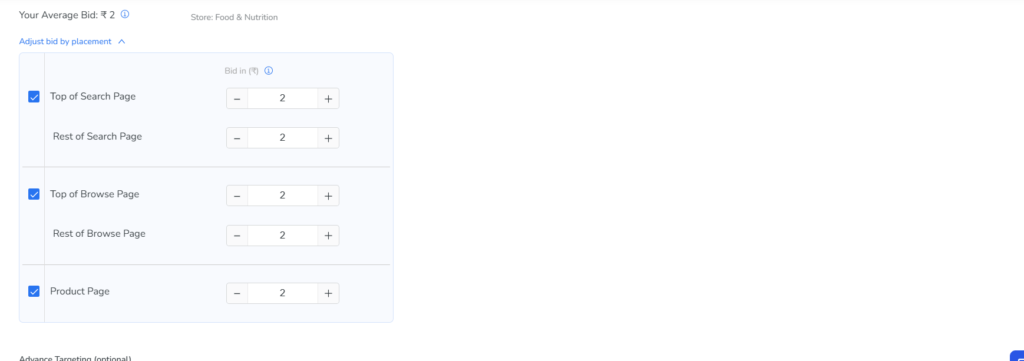

Step 7 – If you want to create more ad groups click on “Add Ad Group” and repeat step 4 to 6. Otherwise, click on continue, review the campaigns and click on submit to launch the campaign.
Use Cases for Product Contextual Ads (PCA)
1. Driving Awareness with PCA
PCA can effectively drive upper-funnel impact by placing your brand in front of users during their browsing journey.
- Creative Types: Use video ads or rich creatives to grab attention and convey brand messaging.
- Placement: Ads appear at the top of browse and search pages, maximizing visibility.
- Strategy:
- Open Targeting: Run campaigns at the category level without specific keywords to broaden exposure. This helps tap into a larger audience base and enhances brand awareness.
- Related Stores: Target similar or complementary stores to reach users with related interests and boost visibility.
- Keyword Targeting: Use high search volume keywords with phrase match for broader reach. Including branded keywords is also recommended to capture brand-aware users.
This combination ensures your products are seen by a wider audience, making PCA a great tool for brand discovery.
2. Driving Consideration with PCA
To push users further down the funnel, PCA can also drive product consideration through more intent-driven placements.
- Creative Types: Leverage interactive creatives or auto creatives to highlight product features and encourage engagement.
- Placement: Ads are served on product pages and search result pages, aligning with users already showing interest.
- Strategy:
- Focus on keyword targeting:
- Use generic and competitive keywords to attract users exploring multiple options.
- Include your own branded keywords to prevent funnel leakage to competitors.
- Apply phrase match to ensure your ads reach high-intent shoppers searching for related terms.
- Focus on keyword targeting:
With the right targeting and placement, PCA helps turn browsing users into potential customers.
Advanced Strategies to Maximize PCA Performance
Leveraging Related Stores in PCA
Related Stores are stores that offer products connected to your campaign category. For example, if you’re running a campaign for shoes, a store selling socks could be considered a related store.
- Why Use Related Stores?
- Expands your ad visibility to new, relevant audiences.
- Helps you reach users exploring complementary products.
- Especially useful for category-level awareness campaigns.
You can find this option under Advanced Targeting while setting up your PCA campaign. It’s a simple but powerful lever to scale your reach.
The Importance of a Robust FSN Strategy
Your FSN (Flipkart Serial Number) selection can make or break your PCA campaign. Here’s how to get it right:
- Boost Relevance:
Group similar FSNs into a single ad group. Mixing unrelated products dilutes the contextual relevance of your ads, reducing their effectiveness. - Maintain Campaign Hygiene:
- Include a minimum of 5 FSNs in each campaign to ensure consistency.
- Make sure your FSNs are available in all pincodes to avoid delivery issues and wasted impressions.
- Drive Performance for New or Slow-Moving FSNs:
- For new FSNs, higher CPCs can increase visibility → more clicks → better relevance score → improved organic ranking.
- For slow-moving FSNs, target browse pages rather than search, where shoppers may be more open to discovery.
Smart Hacks for a Successful PCA Campaign
A few tactical optimizations can go a long way:
- FSN Selection
- Add at least 5 FSNs per campaign.
- Ensure 100% pin code coverage for each FSN.
- Creative Strategy
- Use multiple creatives per campaign—this allows Flipkart’s system to auto-select the best performer.
- Stick to creative guidelines to maintain visual quality and messaging impact.
- CTA Callouts
- Avoid generic CTAs or clickbait. Use copy that is clear, truthful, and product-specific.
- Bidding and Placement
- Set CPC bids as per the suggested winning bid range to stay competitive in auctions.
- Experimentation
- Run multiple campaigns with only one variable changed—such as creative format—to isolate what works best.
How to measure performance of PCA?
After you have run campaigns, it is essential that you track the performance of every campaign. For that reports are required. Flipkart Ads Platform provides following reports which are available under reports section on the left panel, which you can download and utilise to track performance and take actions.
- Seller Level Report : If you have different sellers for your brand, you can see how every seller is performing using the seller level report. It helps in understanding the frequency of ads view and the insights received can be crucial for growth, strategy development and inventory forecasting.
- FSN Report : Each brand has ads being run for multiple products(identified by FSN). To know which FSNs are your best-selling product or low-selling product, FSN report comes in handy. This report provides you with the number of SKUs sold, direct and indirect sales etc at FSN level.
- Placement Performance Report : Flipkart ads run at various placement, and it is very important to know how the ads are performing for each placement. This can be done by analysing the Placement performance report. The report consists of data for views, clicks conversion rate, sales and other metrices for each placement. With this data, you can have an idea what to optimise and where to scale.
- Search Term Report :You can utilize the Search term report to analyse the performance metrics of customers search queries. This helps you identify potential keywords for better efficiency and also identify the queries that are leaking money. Using the data, you can optimize the campaigns for even better efficiency. Additionally, you can incorporate the highly successful search terms into your product description for better SEO and organic rank improvement.
- Product Page Performance Report (Available only for PCA) : Product Page Performance Report provides placement-level reports for the product page, search page, browse page, and other placements. These reports include FSN details, ad group details, and creative ID details. Simply put, it delivers FSN-level data for each ad group at both the creative and placement levels within a specific campaign.
- Campaign performance Report : A campaign performance report gives a clear and complete view of how your campaigns are doing. It helps you see which ones are working and which aren’t, so you can make better decisions based on data.
- Keyword Report : A keyword report on Flipkart provides detailed insights into the performance of keywords in your campaigns. It helps identify high-performing and underperforming keywords, enabling you to optimize bids, improve targeting, and maximize ad efficiency.
How to optimize performance of PCA?
Flipkart Product Contextual Ads can be optimized in the same way as a PLA.
Although, there are some additional optimizations that can be done for PCA.
You can optimise for creatives. You can conduct A/B test for creatives by creating multiple ad groups and see which ones perform better and can utilise the similar strategies for future. Although, the Creatives must be curated based on Weather, festivals, events etc to align with the mood of the customer.
Best Practices!
Here are some of the practices you should follow on Flipkart to improve the performance:
- Category Node Accuracy : Tag products accurately on category nodes to increase impressions.
- Negative Keyword Targeting: Identify irrelevant keywords to improve your campaign’s return on investment.
- Ad Placement: Monitor and optimize placements for the brand to ensure better returns and effective budget allocation.
- Communication: Maintain regular communication with the brand and Flipkart teams, staying updated on new features and optimization techniques to help achieve eCommerce goals.
- Use High-Quality Visuals: Include high-quality images or videos to showcase your product and capture attention.
- Highlight Unique Selling Points: Emphasize the key features and benefits of your product in the ad copy to stand out from competitors.
- Monitor and Optimize Your Campaign: Track performance and refine targeting, ad copy, and budget to enhance results.
In conclusion, Flipkart Product Contextual Ads(PCA) is a powerful tool for boosting brand visibility and driving conversions. By optimizing bids, crafting effective ads, and analyzing performance, you can maximize its potential. Stay agile, adapt to platform updates, and refine your strategies to achieve continued success in e-commerce advertising.

Highly informative and well presented.